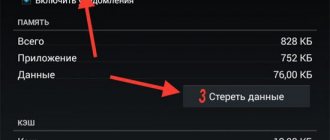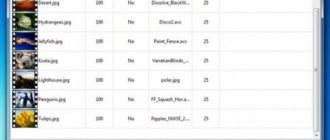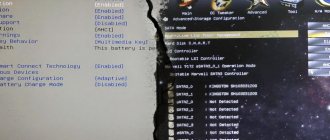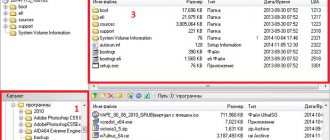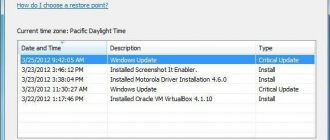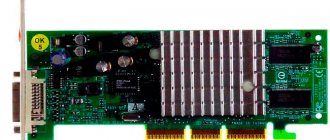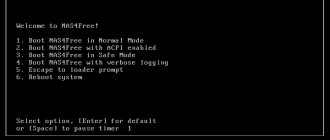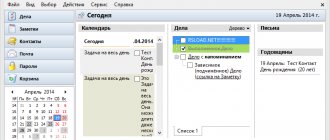PREPARATORY STEPS
To perform many of the tricks described in the article, you need root and the Xposed Framework that depends on it. In the standard version, it will work 100% correctly only in AOSP firmware, but even in them there may be glitches. Problems with Xposed modules can often arise in stock firmware with modifications from the manufacturer, but there is a special version of Xposed for them: for TouchWiz, for MIUI, for firmware based on Android 5.0+. HTC owners can install the official build, but S-OFF is almost always required.
Got root, installed Xposed? Then let's go.
Changing the Android interface
Introduction
Probably each of us wants to stand out from the rest in some way, and everyone achieves this in their own way. But when it comes to smartphones, it seems that the possibilities for customizing the device are almost limitless. However, having tried many different launchers, you understand that choosing from all this variety is extremely difficult, and therefore it would be nice to have information on hand about the most interesting options for changing the appearance of your device.
all QRs are clickable
Interfaces
Interfaces are, of course, not a complete redesign of the standard smartphone interface, but they represent something more than just a launcher.
HTC Sense - great and terrible
Perhaps only the lazy now do not know about Sense - an interface developed by HTC that combines convenience and style. Someone considers it exemplary and almost ideal, someone is indignant about its slowness and shortcomings, but there is hardly a person familiar with Android who would be left indifferent by this wonderful interface.
An undoubted advantage of Sense is the uniformity of the interface. Perhaps only the standard Android interface (and MIUI) can boast of this. With Sense installed, the Android looks unified and collected. At first, for a long time I could not understand what was wrong with my deathphone after I changed the standard firmware to CM7, but in fact everything turned out to be simple - there was no single style characteristic of Sense.
MIUI - only for the elite
If anyone can encroach on Sense's laurels, it will definitely be MIUI. I discovered this firmware only recently, but immediately fell in love. Lightweight but very original shell, comes complete with firmware from our Chinese friends. After getting acquainted with MIUI, you are surprised at the work that has been done on the interface. The guys working on the firmware are really very talented and passionate about their work, which is why we have such a wonderful interface. Offsite
It has all the same advantages as Sense, except for manufacturer support. In terms of usability, it’s also probably on par. Perfect for those who want a well-designed and interesting interface, but don’t like Sense. Alas, the firmware is officially developed only for a few smartphones, but if you spend some time reading XDA
I think it can be installed on almost any device.
Launchers
In second place, after such global interface reworks as the above, are probably launchers (I haven’t come up with a normal translation for this word, and on forums they are usually called launchers, so I decided to call them that here). It’s probably impossible to write about all the programs in this category, or at least difficult, because some “super-mega-original” launcher will soon pop up that they forgot to mention, so I’ll make a kind of TOP-5 launchers from the market.
Go Launcher EX - a strong team
Products from Go Dev Team have always been interesting and high quality, and for this they enjoy well-deserved public attention. In addition to the launcher, the authors provide: dialer, contacts and SMS. All applications are stylish and convenient, and regularly appear in the first positions in the market.
My acquaintance with Go Dev Team products began with Go SMS. The standard client did not know how to sort messages by transit time rather than sending time, which is why the dialogue turned into pumpkin porridge, and the pop-up with new messages pleased me. I started using the launcher and contacts after updating my smartphone to CM7, and was pleased (before I met MIUI). Overall, the team is very strong and the applications are decent - 5 out of 5.
ADWLauncher - everything is under control
Standard launcher in CM7. It can do a lot, and is one of the optimal performance memory launchers. Almost everything we see is customizable, and its big advantage is that the launcher is open. If anyone is interested, you can help the developers, the project is hosted on code.google.com.
If you like to be in control of everything and everyone, this is definitely your choice. I found such an abundance of settings a little scary, because I am a supporter of minimalism, but this is just my opinion. It works quite stable and fast, although it’s difficult for me to compare the speed on my HTC Inspire, because almost everything works fine there.
SPB Shell 3D - a new generation?
As the developers of this interface say, their brainchild is a new generation of mobile interfaces. The interface, completely made in 3D, looks really impressive, but since there is no free version, I wasn’t able to try this sweetie. As a rule, 3D is not a pleasure for everyone; if the interface is launched on a weak device, then all the pleasure will be negated by the response delay. But for connoisseurs of beauty with powerful smartphones, this is just the thing.
With all my love for frills and beauty, I never understood the idea of a 3D interface. If in games 3D is needed to convey images, then in the interface I like things that are more concise and light. However, I in no way claim to be an authoritative opinion on interface design, and I leave it to the readers to judge what is undoubtedly an impressive product. For the “WOW!” effect — 5 out of 5.
Regina 3D - and again “WOW!”
Another 3D launcher. Not as sophisticated as SPB Shell, but accordingly has lower requirements. Made in the style of the basic Android interface, and it looks quite decent; on DHD the effects seemed quite smooth and beautiful to me.
No frills 3D interface. I was pleased with the smoothness of the animation, but I wouldn’t use Regina 3D all the time. I get tired of the constant interface noise, and after the first impression wears off, the 3D effects don’t seem as interesting and beautiful as at first. In any case, the work is worthy, and also free.
Launcher 7 - Android or WP7?
Metro UI is without a doubt one of the most interesting trends in interface design. Original and conceptual, it changes the standard idea of the workspace of a smartphone, and for a phone with a touchscreen it is even more convenient, because there is no subtext, the element represents exactly what you see, and the large tile makes navigation even more convenient.
I've always loved conceptual design. But... I never liked the idea of making one axis similar to another. When buying an Android phone, you consciously make a choice in favor of Android. But as practice shows, not everyone agrees with me. Launcher 7 is at the top of the market.
Conclusion
This article is not subject to comment, since its author is not yet a full member of the community. You will only be able to contact the author after he receives an invitation from someone in the community. Until this moment, his username will be hidden by an alias.
CHANGING THE LOADING ANIMATION
The boot animation is stored in the /system/media/bootanimation.zip file.
Inside there is a text document desc.txt, it indicates the frame rate, horizontal and vertical resolution, etc. There are also the images themselves (frames), which change with the frequency specified in desc.txt. The order and rules for playing animation from folders are also written in this file. All you need to do is get the archive from the device using a file manager with root support, unpack and replace the images, remembering to first compress them to the desired resolution. Next, just pack the archive without compression and return it to its place. But, of course, it’s easier to take a ready-made archive. The website hboot.co.uk is full of them.
On the other hand, although the animation is interesting to look at, it makes no sense. But it can be useful to see which services are running. The easiest option is to install LiveBoot, which outputs logcat and dmesg, that is, Android and Linux kernel messages.
How to find and install Launcher
Where and how to download Launcher? Like other applications, such programs are distributed through the Google Play Store. You can find them by searching for “launcher” or “launcher”. They are installed in the classic way, the only difference is that when you first launch you will need to make basic settings, for example, the popular Nova launcher offers you to choose a theme, application menu style and how to open this menu.
There are free launchers, there are paid ones, everyone chooses for themselves what they need. You can also find and download launchers from numerous websites dedicated to Android topics. On third-party resources, applications are available mainly in the form of APK files installed through standard Explorer.
ADDING YOUR SOUNDS TO THE STANDARD SET
Sounds can be dropped into one of the folders in /system/media/audio. • alarms — melodies for alarm clock; • notifications—sounds for notifications; • ringtones — ringtones; • ui - system sounds, for example, low battery, camera focusing, selection of interface elements. Some applications may access them by default, so you can replace them with your own.
Why put ringtones in the system partition? Firstly, the files there are able to withstand a general reset to factory settings; secondly, sounds from special folders can be set to a signal (alarm sound, call, SMS receipt) in almost any application.
How to delete?
Deactivate the launcher if you do not want to use it:
- Open Android settings.
- Go to Applications.
- Find the shell in the list and click on it.
- "Remove default settings" button.
After that, select a different interface for Android.
If you don't need this application and you are sure that it will never be useful, you can permanently erase it. In this case, simply disabling the program will not be enough. After all, it takes up space in the device’s memory. Why clutter your system with something you don't intend to use?
Here's how to remove the launcher on Android:
- Go to Settings - Home Screen.
- Find the shell there.
- Click on the image of the trash can.
You can also get rid of the utility through the Play Market. Open it and find the application page. The button you need will be there.
If for some reason the pre-installed Android interface does not suit you, you are uncomfortable working with it, or you just want to try something new, change the launcher - the graphical shell of the operating system. The program can be deleted at any time and returned to factory settings. Or just put a different topic.
Click "Like" and read the best posts on Facebook
Good day, friends, today we will talk about how to remove the launcher on an Android phone. Today there are a huge variety of launchers from a variety of companies. As the article progresses, we will briefly answer the question of what it is, how to change the launcher, and at the end we will tell you how to completely remove the launcher from the system.
CHANGING FONTS
I very, very doubt the usefulness of these actions, because the standard Android font is almost perfect. But the taste and color...
You can use a special application to install fonts. For example, HiFont allows you to change fonts in the firmware of Samsung, HTC, Motorola, Lenovo, Huawei, Nokia X without root. And if you have root, then in all other devices. You can either use fonts already available in the application catalog or add your own.
But where to get them? There are three options:
- fonts taken from different firmware of Android devices can be found in the post on w3bsit3-dns.com;
- on w3bsit3-dns.com there is a good collection of user-created fonts in the next post;
- collection on XDA.
You can install fonts without using a special application. We take the .ttf files from the archive, throw them and replace them into /system/fonts/ (root is needed) and reboot the device.
How to setup?
After the launcher is installed, you need to press the “Home” button and select the “Always” option to set it as the default one. But what if you already have several skins and want to switch between them without downloading them every time?
Here's how to change the launcher on Android in the settings and install the one you need:
- Go to the gadget settings.
- Click on the "Home Screen" section. In some firmware, this function may be located in a separate “Themes” item.
- All previously installed shells will be there. Just select the one you need.
This way you can change the interface in the settings at any time.
Each such program has its own parameters. Open it to see what features it has and what you can change.
ADDING SUPPORT FOR THEMES
The Xposed module HKThemeManager will help with this. It allows you to apply themes for CyanogenMod on devices with stock firmware. Moreover, unsupported themes can be remade using apktool specifically for this program. The alteration is quite complicated, so it is much easier to use a ready-made collection on w3bsit3-dns.com.
Before installing the theme, HKThemeManager will show the entire list of applications to which the theme will be applied. Uncheck those that are not needed, click on “Apply theme” and reboot the device.
There is also an alternative option for installing themes - the Layers Manager application. It works in any firmware on Android 5.0+ thanks to the introduction of the RRO resource reassignment mechanism. The application's database of themes is huge and is located on the Play Market. To see it, just type Layers Theme in the search.
Keep in mind that the application does not work on firmware based on CyanogenMod: the local engine and RRO conflict.
How to change the theme on Android via Google Play
The fastest and most convenient way to change the theme is to use the official market of the Android operating system, Google Play. Moreover, this procedure can be performed either directly on the smartphone itself or remotely via a personal computer. Moreover, both methods of changing the external design occur in the same way.
Instructions for changing the theme on a smartphone running on the Android operating system are as follows:
- Go to the Google Play market.
- In the search bar of the software, enter the word “Theme” (or the English version “Theme”).
- In the search result that opens, select the result you like.
- Click on the “Install” (or “Install”) tab to configure the theme on your smartphone.
After this, the external design of the portable gadget will change to the one selected by the user. Changing the theme via a computer is not too different from the method on a smartphone:
- We go to the Google Play market using the link - play.google.
- In the search bar of the software, enter the word “Subject”.
- In the search result that opens, select the result you like.
- Click on the “Install” tab
- We go to the smartphone and agree to installation through the “Application Installer” program.
It is important that the Google Play account is identical to the one activated on the user’s portable gadget. If this is not done, the design will be transferred to the device to which the account used in the application marketplace is connected.
You can also simply connect your mobile phone to your personal computer via a USB cable. In this case, the user will simply skip the last point.
Please note that some themes for mobile phones on the Android operating system are paid. You should carefully personalize your device so as not to spend extra money.
Video instructions for changing the appearance of your smartphone via Google Play
TURNING ANDROID 5.X+ INTO ANDROID N
The Android N-ify module will help us with this. After installation, the following features from Android N will appear:
- The design of the notification panel will noticeably change. The quick settings panel will appear;
- Interesting inscriptions will appear in the settings under some items.
- For example, under Wi-Fi the name of the current access point will be written, under the “Battery” item - the remaining operating time and battery charge in percentage;
- the Easter egg will change in the “About phone” menu;
- You will quickly switch between the two most recently launched applications by double-clicking the “Recent” button.
Android N-ify also has useful settings, through which you can not only disable it, but also configure individual changes made.
How to change the appearance of the interface on Android (Updated 2019)
Details Category: Questions about the android system Published: 11/09/2019 04:00 Author: Lewkee
One of the main features of Google Android OS is the possibility of free user personalization. No other mobile platform these days can change the interface as much as Android. Changes will only require some skills in working with the system and desire. If you're new to Android, this tutorial will help you learn the basics of changing the appearance of Android.
Ways to customize an Android device
Sometimes installing a custom visual installation, also called a launcher or launcher (from English Launcher), is not difficult. And sometimes, in order to change the standard interface of the entire system, you have to resort to root (administrator rights), that is, you can replace and delete any default wallpaper, icons and images. Don't like how the settings look because of the icons? No problem, they can be easily cut out if the device is popular enough and has custom firmware.
Before you start
Any changes to the appearance and original settings of Android lead to changes in performance. Things like built-in live wallpapers, clocks, weather widgets and others will have a very negative impact on the speed of Android as a whole and on battery consumption. This depends on the number of additional functions and animations, so be careful when choosing a visual shell. Think several times before installing live wallpapers, widgets, etc. The more beautiful and cool the visual effects on live wallpapers, the more they “eat up” the smartphone’s resources and waste battery power.
Also, do not forget that free applications of this kind often come with intrusive advertising. This is a necessary evil, since developers need something to live on. However, you can completely get rid of it using our instructions.
Changing the background on Android
Changing the background image is very easy. It is enough to open the context menu through the launcher menu or with a long tap on the display, select your favorite picture from the list of default wallpapers, or use your own photos or pictures from the gallery.
In addition, you can use free programs - online or offline wallpaper catalogs, specially optimized by form factor / image volume for mobile devices. It is also recommended to use the following applications:
- Coveroid Wallpapers HD.
- Bless Wallpapers HD.
- HD Wallpapers.
- Wallpaper application.
- Zedge.
Some of them, in addition to the usual static wallpapers, also have live wallpapers, Android games and ringtones.
Installing live wallpapers for Android
Live wallpapers are the most beautiful way to change the look of your Android smartphone. Our website has a fairly extensive catalog of live wallpapers for Android.
We recommend trying these live wallpaper options:
- Material Design is perfect for styling a pure version of Android.
- Circulux LWP will appeal to lovers of round shapes.
- Sky Islands LWP will make your smartphone background meditative, inviting you to admire the islands floating in the clouds.
- Weatherback Weather Wallpaper offers you to watch the weather outside your window live, right on your desktop.
- Awesome-Land Live wallpaper HD will appeal to wildlife lovers.
How to install live wallpapers on Android for different OS versions and launchers, read the link.
Setting up the lock screen
The lock screen is also an important part of the interface. And it not only can, but also needs to be configured in such a way as to make the empty space as informative and useful as possible. For this purpose, there is a lot of software that allows you to display a huge number of useful things on the screen of a locked device - from displaying a news feed using Simple RSS, to an unlimited number of informative widgets when using the Extended Controls application.
Changing icons on Android
An app icon pack that aligns all desktop and menu icons with a consistent visual style can be a great way to give your smartphone a new look. For example, you can use these:
- Rondo will transform the icons of more than 3,500 applications into a stylish Material Design analogue, and at the same time offer background wallpapers.
- TAY will add shaded 3D icons to 1,800 apps to match dark themes.
- MIUI 5, as the name suggests, converts icons into ones similar to those used in the Xiaomi shell.
- Soul contains 2,300 icons and is perfect for those who like to combine bright colors with dark frames.
At the same time, unlike full-fledged launchers, even the largest package of icons for programs will not use a large amount of system resources.
Installing widgets on the Android desktop
Widgets are another way to customize the look and feel of Android. Currently, there are a huge number of widgets that come either as separate applications or in addition to regular applications. In our Android Widget Catalog you can find many interesting examples, and we also recommend that you familiarize yourself with these useful widgets:
- Power Toggles, which duplicates the contents of quick icons from the top menu bar directly to the desktop.
- Fancy Widgets, adding elements straight from the Sense set, HTC's proprietary shell
- HD Widgets, an application with a huge set of beautiful and vibrant additions.
- UCCW is the Ultimate custom widget, which allows you to create your own desktop widgets.
You can read how to install and remove widgets on Android using the link.
Install the launcher on Android
Today there are many launchers, most of them can be found completely free of charge in the public domain. The only difference is in the “extra animation” and the visual effects used. All that is required is to download the desired launcher for Android from Google Play, and then press the Home button on your smartphone when your smartphone prompts you to select the program with which you want to perform the action. Select a new launcher from the list and check the “Default” checkbox if you want this launcher to become the main one. We recommend starting with the following visual shells:
- Nova Launcher - bright and customizable
- Pixel Launcher, which turns your smartphone into an analogue of the Google Pixel line.
- Necta Launcher with a unique interface designed for children.
- Go Launcher EX, which has many additional widgets, themes and services.
- aShell, a fast, beautiful, functional launcher.
- microsoft.launcher - for lovers of “soft” software
- Yandex.Shell Launcher from Yandex based on SPB Shell.
- POCO Launcher - launcher from Xiaomi
In other words, try a few different launchers, since you can't please everyone and everyone has different tastes, but we tried to point out the most productive and stable shells available. But in this case we must not forget about one important fact. On smartphones from Huawei, Xiaomi, and others that have a shell from the manufacturer, launchers are unlikely to work normally. Moreover, Huawei has officially blocked the ability to install launchers on its devices due to stability problems.
Deep interface change
Now the rest of the Android interface or themes. To completely change the graphical interface, you will need custom firmware, root rights and a pre-installed theme changer (it can be located either in the applications section or in the main settings). The TouchWiz interface (Samsung Experience) from Samsung, the original MIUI from Xiaomi, and EMUI from Huawei and Honor are in great demand They will not be difficult to find, but they are not suitable for every device. Custom firmware that is not based on the interface from famous vendors is also very popular:
- Pixel Experience, as close to pure Android as possible.
- AOSP Extended, also close to the pure version of the OS.
- LineageOS or, for older models, CyanogenMod/
- OxygenOS, Android skinned by OnePlus, is a cross between LineageOS and Pixel Experience.
- Paranoid Android.
4) Installing widgets on the Android desktop
Widgets are another way to customize the look and feel of Android. Currently, there are a huge number of widgets that come either as separate applications or in addition to regular applications. In our Catalog of widgets for Android you can find many interesting examples. You can read how to install and remove widgets on Android using the link.
5) Deep interface change
Now the rest of the Android interface or themes. To completely change the graphical interface, you will need custom firmware, root rights and a pre-installed theme changer (it can be located either in the applications section or in the main settings).
The interface from Samsung, the original MIUI and Touchwiz , which are not difficult to find, are in great demand. They are not in the Android store, but these themes are available for most popular devices. They are ported by fairly experienced users.
This issue is too broad to be covered in this article. In addition, the firmware methods depend on the device. You can find popular firmware and shells on online forums related to your device.
Attention!
Any changes to the appearance of "stock" and the original Android settings lead to a change in performance. Things like built-in live wallpapers, clocks, weather widgets and others will have a very negative impact on the speed of Android as a whole and on battery consumption. This depends on the number of additional functions and animations, so be careful when choosing a visual shell, and think several times before installing live wallpapers, widgets, etc. The more beautiful and cool the visual effects on live wallpapers, the more they “eat up” the smartphone’s resources and waste battery power.
The exception is live wallpaper without animation, which simply changes the static background every day (that’s what I use), for example, live wallpaper Photo of the Day,
We display the real signal level
Sometimes you need to know how well the Internet is received in different parts of the room, how the position of the smartphone affects the signal reception level, or you simply need to compare the signal reception level of your smartphone and other models. NetStrength will help with this. The module can display the cellular network signal level in decibels per milliwatt (dBm or dBm). This unit of measurement has a negative value, and the closer it is to zero, the better the reception. You can also enable the display of ASU (Arbitrary Strength Unit - signal-to-noise ratio in the pilot channel). Calculated using the formula ASU = (dBm + 113)/2.
By the way, the module can show the Wi-Fi reception level in dBm, Mbps (Mbit/s - megabits per second) and percentage.
Changing the launcher on your smartphone
On Samsung
Open the Settings item, which is called Applications.
Now press the button with three dots in the upper right corner to call up additional options.
Select Applications by default.
This settings section contains applications for opening Internet pages, messaging and working as the main screen of a smartphone. In the factory settings of the phone there is a launcher from Google or a proprietary one: Samsung Expirience for Samsung, MIUI desktop for Xiaomi smartphones.
Select the appropriate Desktop and check the box next to it.

